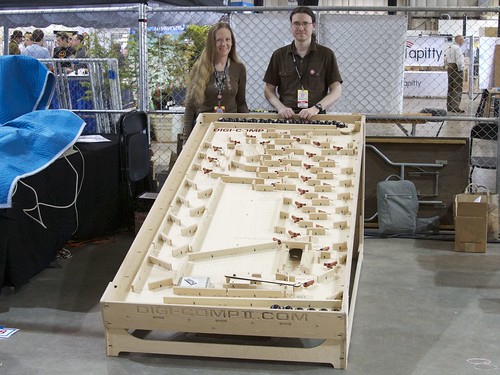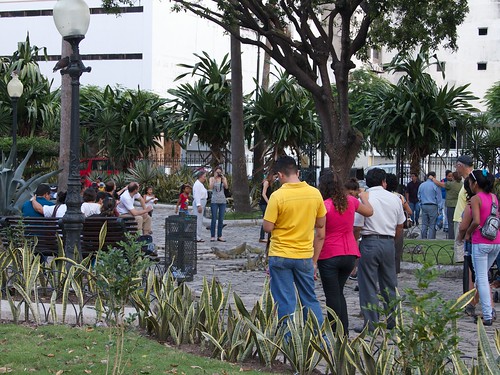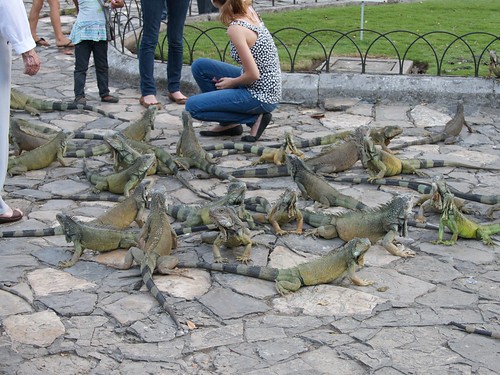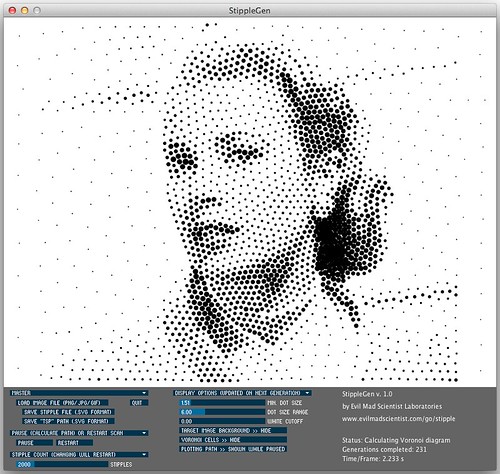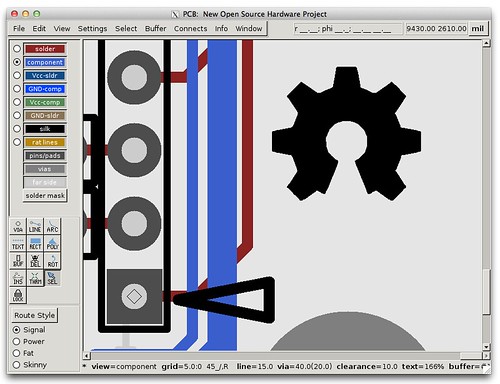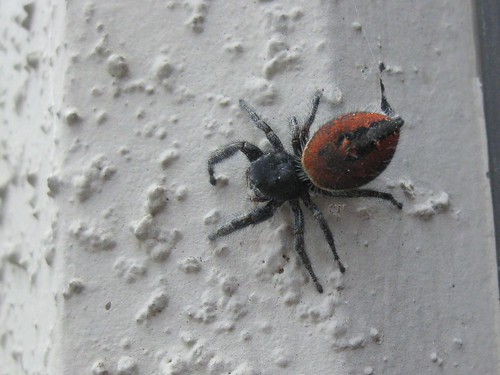All posts by Windell Oskay
Maker Faire is (almost) here!
The 2012 Bay Area Maker Faire will take place May 19 and 20— just 9 days away — in San Mateo, California.
This is the big Maker Faire, and the best. If you’ve never been to Maker Faire, or if you’ve only been to one of the little ones, it’s an experience not to be missed.
Today (Wednesday, May 9) is the last day to buy advance discount tickets for Maker Faire. If you don’t have your tickets yet, this is a great time to get them.
This year we will again be bringing the Giant Digi-Comp II— our supersized binary digital mechanical computer —to Maker Faire. You can read all about the Giant Digi-Comp II here and see a video demonstration of it here. We will also be doing an Egg-Bot demonstration in the Maker Shed.
Finally, we’ll also be participating in Maker Faire Education Day (Thursday, May 17, for K-12 students).
We hope to see you there!
Version Control for Stuff
Today at Wired, Chris Anderson draws attention to one of our favorite problems: Version Control for Stuff. We wrote about this last fall in our article, Improving open source hardware: Visual diffs.
In his article, Chris introduces the big ideas (using our article for an example) and discusses a couple of the current efforts towards “source code” repositories for hardware.
Instead of such expensive and closed commercial systems, we need open Web-based repositories for design files, filling the role that GitHub, Sourceforge, and Google Code have for software. (You can already use the existing code repositories for design files. And some, like GitHub, already have good ways of comparing images. But none of them were designed for CAD or PCB design, so you can’t understand the contents of the files and manage them the way you’d manage text.)
I’m not sure to what extent the latter part is truly relevant. Version control for software projects isn’t necessarily context aware, so why should we expect hardware to be?
That is to say, when you commit a new revision of your code to GitHub, do you expect it to recognize— and tell you in a diff —that a given block of code represents a loop or class definition? (Likely not— just as it doesn’t understand that another loop draws an integrated circuit footprint.) And, version control is already used on files that are not particularly human-readable, whether those files are ultimately used in a hardware or software context.
One might even argue that hardware is more amenableto simple diffs than software, because our eyes can take in so much information, so quickly.
But in any case, he’s right on the big points: we need those visual diff tools. And yes, as version control tools do evolve to become more context aware, we’ll increasingly need them to be aware of the differences between hardware and software.
Link: Wanted: Version Control for Stuff @ Wired
The Ping-Pong Ball Bot
Over at RasterWeb, certified Egg-Bot Operator Pete Prodoehl has written at some tips for using the Eggbot as a machine for decorating ping pong balls:
I found the trick to doing them well […] was to put the ball in with the printed logo aligned directly upwards, and then using the manual control to spin the ball 180 degrees (1600 steps) so the logo is facing downwards so you can center your plot onto the backside where you’ll have the most room and (in theory) the artwork should be centered.
We’ve seen plenty of printing on ping pong balls before— often in the context of beer pong(!)—but these look great, and that’s a pretty neat tip about making sure that the logo doesn’t get in your way.
Link: Ping-Pong Ball Bot @ RasterWeb
Now with 100 Percent More Evil Mad!

ROBOT PARTY (at Evil Mad Science) THURSDAY!
Tomorrow (Thursday) is the Robot Party! This Robot Party is VERY SPECIAL because it is taking place at +Evil Mad Science!
They have tons of robots here, the biggest one is the shopbot. We might put the webcam on the shopbot and have it move around! +Lenore Edman & +Windell Oskay will also be around so you can ask them LOTS of questions!
:::
What is the Robot Party?
The Robot Party is a weekly Google+ hangout that brings together robot builders from all over to share their robots, knowledge, and ask questions! It is for all age ranges, young or old, just bring your robot!
To watch the Robot Party, go to the Robot Party page here:
http://robotgrrl.com/robotparty
To join the Robot Party with your robot, watch our Google+ page right here for the hangout! (Usually 5-10mins before showtime)
To see old photos of the Robot Party, check out the flickr collection here:
http://www.flickr.com/photos/robotgrrl/collections/72157629489421269/
:::
Looking forward to hanging out with everyone again! We’ve heard from +Sean Lewis +Eaglesnest Robotics recently and they have been building up their +Christopher Robinson Tiny Tanks, so it will be really cool to see them!
Also since this is on the tail end of RoboGames and the Homebrew Robotics Group meeting, we may have new people!
SEE YOU AT THE ROBOT PARTY! Tell all your friends!”
Field Trips: Parque de Las Iguanas
Guayaquil (often pronounced as “Gwy-a-keel”) is the largest city in Ecuador. It’s a sprawling metropolis of some 4 million people, located just south of the equator and just inland from the pacific ocean.
In downtown Guayaquil, next to a little cathedral, an unassuming city park block features trees and benches, grassy areas behind knee-high fences, coblestone walkways, and gaggles of kids playing with their families. And also, green iguanas. Hundreds of green iguanas.
While formally known as Parque Seminario (Seminary Park– again, it’s next to the little cathedral), the park is better known to the locals as Parque de Las Iguanas, or Iguana Park, and the resident population of iguanas is as people-friendly as they come. The iguanas are not kept behind fences or cages; they roam freely and seem to live in the park entirely by choice. (Of course iguanas are native to the region, and the surrounding city streets are a lot less critter-friendly than the park.) Continue reading Field Trips: Parque de Las Iguanas
StippleGen: Weighted Voronoi stippling and TSP paths in Processing
One of the perennial problems that we come across in a variety of contexts, including CNC artwork and producing artwork for the Egg-Bot, is the difficulty of creating good-quality toolpaths– i.e., vector artwork representing halftones –when starting from image files.
One of the finest solutions that we’ve ever come across is TSP art,” where the image is represented by a single continuous path. You can generate a path like this by connecting all of the dots in a stipple diagram. Designing a route that visits each dot exactly once is an example of the famous Travelling Salesman Problem (or TSP). From the standpoint of toolpaths (for the Egg bot and most other CNC machines), a “TSP” path is even nicer than stipples, because little or no time is spent raising and lowering the tool.
Today we’re releasing a new program, StippleGen, which can generate stipple diagrams from images, using Secord’s algorithm. StippleGen saves its files as editable, Eggbot-ready Inkscape SVG files, which can in turn be opened by other vector graphics programs, or re-saved as PDF files for use in other contexts. It can also generate a TSP path from the stippled image, and either save that path as an SVG file or simply use that path as the order of plotting for the stipple diagram.
StippleGen is free and open source software, written in the Processing development environment. It comes ready to run on Mac, Windows, and Linux, and it is available for download now.
Continue reading StippleGen: Weighted Voronoi stippling and TSP paths in Processing
OSHWA – The Open Source Hardware Association -Coming soon
organization (status pending) working to spread the love of open source hardware. We’re still deep in the process of
working out all the details, but please bookmark oshwa.org, and check back there for
upcoming news. OSHWA’s first project is a survey, “to better understand the Open Source Hardware community.” Catarina Mota has lead this project and created a survey along with David Mellis and John De
Cristofaro. The aggregate and anonymous results will be made publicly available in May. If you’re involved with the OSHW community, we’d invite you to take the survey.
Urban scientist: An unusual spider
It’s always good to keep your eyes open, ready to see new things. I came across this striking not-particularly-small spider with a bright red velvety abdomen, just hanging out on the concrete side of a building here in Sunnyvale, California.
I’ve never seen one of these before! How might you go about identifying it?





